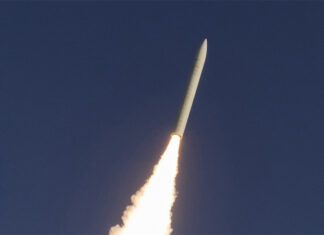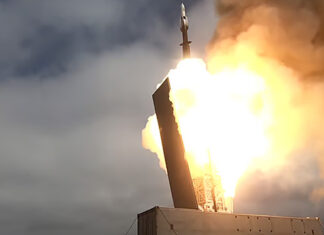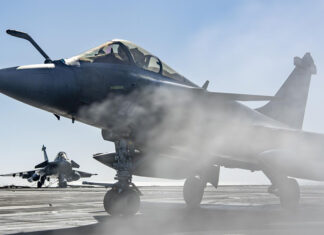
The U.S. Navy accepted delivery of first aircraft carrier of the new Ford class – the future USS Gerald R. Ford (CVN 78), at a ceremony at Newport News, Virginia, May 31, 2017.
Ford is the lead ship of its class and the first new-design aircraft carrier delivered to the Navy since USS Nimitz (CVN 68) in 1975. It is also the first aircraft carrier to join the fleet since USS George H. W. Bush (CVN 77) delivered in 2009.
Compared to the current Nimitz class carrier the next generation of Ford-class has a larger flight deck, and hangar capacity to host more aircraft, additional weapons and aviation fuel storage. Another innovation is the Electromagnetic Aircraft Launch System (EMALS) and Advanced Arresting Gear, replacing the steam catapults used on current carriers. EMALS will be able to increase sortie rates by one-third, when compared to the Nimitz class and enable deployment of lighter aircraft and unmanned aerial systems (UAS) which cannot withstand steam catapults’ loads.
Further, the Navy’s newest aircraft carrier generates three times the amount of electricity as previous classes and is designed to rapidly add capabilities as new systems become available over the course of its projected 50-year service life.
Ford will be commissioned into the fleet this summer, formally placing the ship into active service. Following this, there will be a “shakedown” period where the ship will conduct several at-sea events to provide longer underway periods for the ship’s crew to operate and train on ship’s systems. In addition, planned deferred work will be performed, and any deficiencies identified during trials will be addressed during in-port periods.
Ford is expected to be operational in 2020 following achievement of initial operational capability.





















